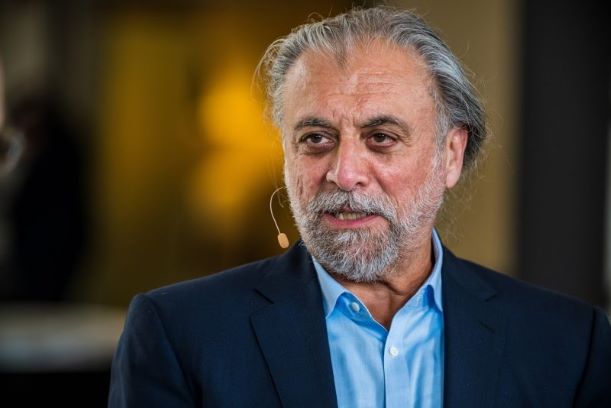 AI
AI
 AI
AI
 AI
AI
As more enterprises recognize the importance of leveraging data to enable smarter business decisions, the role of the chief data officer has gained prominence. But it’s inevitable that CDOs will increasingly partner with chief information officers to develop business data strategies, according to Inderpal Bhandari, global chief data officer at IBM.
“The major driving force for [the partnership] is, in my view, artificial intelligence,” he said Bhandari (pictured). “As people try to infuse artificial intelligence, then it’s a very technical field still. It’s not something that you can just hand over to somebody who has the business chops, but not the deep technical chops to pull that off.”
Because of that, if the CDO has technical skills in this area, they will likely lead AI efforts internally, as Bhandari does at IBM. “But I think in other cases you’ve got chief data officers who are coming in from a different angle; they will partner up with the CTO now because they have to, otherwise you cannot get AI infused into the organization,” Bhandari added.
Bhandari spoke with Dave Vellante, host of theCUBE, SiliconANGLE Media’s livestreaming studio, during the MIT Chief Data Officer and Information Quality Symposium. They discussed how the role of the CDO has evolved over the years, the impact of COVID-19 on digital transformation and the work of CDOs, the benefits of reducing pipeline cycle times and the challenges of changing the data culture in organizations.
The partnership between CDOs and CIOs is possible because both — as well as other “C” officers, including chief analytics officer, chief digital officer and chief technology officer — are all involved in the same job, which is to accelerate the business digital transformation, according to Bhandari.
While relatively new, the role of CDOs have evolved over the years, and the main change is that there is more awareness among business leaders about its importance, Bhandari pointed out. “Now, having said that, I think it is still only awareness,” he noted. “I don’t think that there is really a deep understanding of those levels.”
Bhandari’s experience in this area began in 2006, when he first became a CDO. At the time, there were only four CDOs globally. “I was the first in healthcare, and there were three others — one in internet, one in credit cards, one in banking,” he said. Since then, he has worked for four major organizations.
The COVID-19 pandemic has also contributed to reinforcing and shaping the role of CDOs, which Bhandari considers “agents of change.” The expectations of business leaders regarding the work of CDOs are in three areas, he added. “One is [that] this person is going to help with the revenue of the company by enabling the production of new products. That’s kind of one aspect of the monetization,” he said.
Another expectation is that the CDO will help the organization’s efficiency, making data much more accessible, as well as enabling insights that reduce the end-to-end cycle time for major processes. And the last is risk reduction as regulations and exposure to cyber incidents continue to accelerate.
“What digital transformation has done is it’s managed to accelerate all three of these outcomes, because you need to attend to all three as you move forward,” Bhandari said.
While leading disruptive technology innovations like AI is a recognized role of CDOs, it is not always easy for them to convince company leaders of the value of emerging tech. Therefore, the very first step is to come up with a data strategy that enables a business strategy for the company, according to Bhandari.
“Our data strategy became one of making IBM itself an AI enterprise,” he said. “But the reason for doing that, the reason why that was so important was because then we could use it as a showcase for clients and customers.”
When talking to customers, Bhandari can demonstrate what IBM has done internally at scale. “And then we also lay out for you all the different pain points that we had to work through using our products so that you can kind of make the same case when you apply it internally,” he explained.
IBM can also show costumers how it is possible to set up data pipelines, infuse AI into that data, reduce the cycle time and reap the benefits of it. “Now, with regard to our experience applying AI, infusing it across all our major business processes, our average cycle time reduction is 70%. So just tremendous amount of gains out there,” Bhandari said.
Here’s the complete video interview, part of SiliconANGLE’s and theCUBE’s coverage of the MIT Chief Data Officer and Information Quality Symposium:
THANK YOU